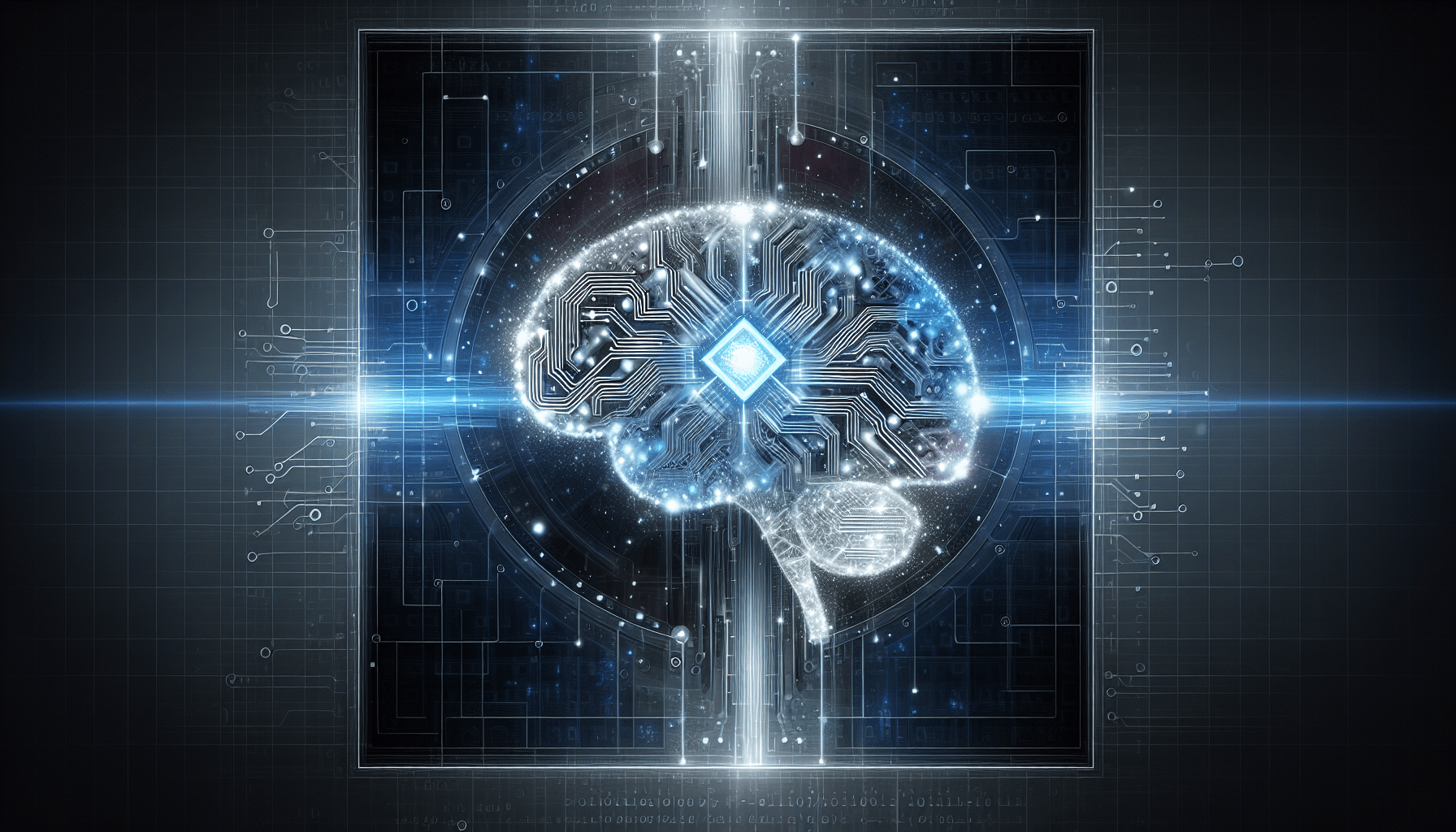Artificial Intelligence, a concept that once belonged solely in the realm of science fiction, has now become an essential part of our everyday lives. Whether you realize it or not, AI is present in the apps we use, the devices we rely on, and the services we interact with. But what exactly is AI, and how does it work? In this article, we will demystify the world of Artificial Intelligence and provide a beginner-friendly overview, shedding light on its definitions, applications, and potential implications in various fields. So buckle up, because by the end of this article, the once-complicated world of AI will feel approachable and friendly, even for the most tech-savvy newbies!

What is Artificial Intelligence?
Artificial Intelligence (AI) refers to the development of computer systems that can perform tasks that typically require human intelligence. These tasks include recognizing speech, making decisions, solving problems, and understanding and responding to natural language. AI systems are designed to mimic human cognitive abilities, allowing them to learn from data, adapt to new inputs, and perform tasks with efficiency and accuracy.
Definition of Artificial Intelligence
Artificial Intelligence can be defined as the branch of computer science that deals with the creation and development of intelligent machines, capable of performing tasks that would normally require human intelligence. AI encompasses various subfields such as machine learning, natural language processing, and computer vision, which contribute to the overall goal of creating intelligent systems.
History of Artificial Intelligence
The concept of Artificial Intelligence dates back to ancient times, with early civilizations envisioning mechanical beings with human-like capabilities. However, the formal field of AI emerged in the 1950s, when researchers began exploring the idea of creating machines that could simulate human intelligence. This led to the development of early AI programs and algorithms, such as the Logic Theorist and the General Problem Solver. Over the years, AI has seen significant advancements, fueled by the growth of computing power and the availability of large datasets.
Types of Artificial Intelligence
Artificial Intelligence can be categorized into three main types: Narrow AI, General AI, and Superintelligent AI.
Narrow AI
Narrow AI, also known as Weak AI, refers to AI systems that are designed to perform specific tasks within a limited scope. These systems are trained on specific datasets and can excel in a particular domain, such as facial recognition or language translation. Narrow AI is widely prevalent today, powering various applications and services that enhance our daily lives.
General AI
General AI, also known as Strong AI, refers to AI systems that possess the ability to perform any intellectual task that a human can do. These systems have a broader understanding of the world and can transfer knowledge across different domains. General AI aims to replicate human-like intelligence and consciousness, although its development is still a subject of ongoing research.
Superintelligent AI
Superintelligent AI refers to AI systems that surpass human intelligence in virtually every aspect. These systems would possess superior problem-solving abilities, creativity, and cognitive skills. The development of superintelligent AI poses significant ethical and philosophical questions, as it could potentially outperform humans in various domains and influence the course of humanity.
Applications of Artificial Intelligence
Artificial Intelligence finds applications in various fields, revolutionizing industries and enhancing human capabilities.
Machine Learning
Machine Learning is a subset of AI that focuses on enabling machines to learn from data and improve their performance over time. By using algorithms and statistical models, machine learning systems can effectively recognize patterns, make predictions, and automatically adapt to new data. Machine learning has numerous applications, including spam detection, recommendation systems, and predictive maintenance.
Natural Language Processing
Natural Language Processing (NLP) enables machines to understand and interpret human language. NLP algorithms can analyze, process, and generate human language, which is essential for tasks such as translation, sentiment analysis, and chatbots. NLP has significantly advanced the capabilities of AI systems in understanding and interacting with humans.
Computer Vision
Computer Vision involves the development of AI systems that can analyze visual data, such as images or videos. These systems can interpret and understand visual inputs, enabling applications such as object recognition, facial recognition, and image classification. Computer Vision has proven to be invaluable in various fields, including healthcare, surveillance, and autonomous vehicles.
Ethical Considerations in Artificial Intelligence
As AI continues to advance, it is essential to address the ethical considerations associated with its use.
Bias and Fairness
AI systems are trained on large datasets, and if these datasets contain biased or discriminatory information, the AI system may perpetuate these biases. It is crucial to ensure that AI systems are trained on diverse and representative datasets to mitigate biases and ensure fairness in their decision-making processes.
Privacy and Security
The proliferation of AI systems that collect and analyze massive amounts of personal data raises concerns about privacy and security. It is essential to establish strict guidelines and regulations to protect individuals’ privacy and prevent the misuse of personal information by AI systems.
Job Displacement
The integration of AI and automation technologies has the potential to disrupt the job market, causing job displacement in certain industries. It is important to consider the impact of AI on the workforce and develop strategies to retrain and upskill individuals in order to adapt to the changing job landscape.

AI and Automation
AI and automation go hand in hand, shaping the future of various industries and transforming the way we work.
Impact on Job Market
The integration of AI and automation technologies has the potential to reshape the job market. While certain jobs may become redundant, new roles that leverage AI capabilities will emerge. It is important for individuals and organizations to adapt to these changes and acquire the necessary skills to thrive in a more automated world.
Benefits of Automation
Automation, enabled by AI, offers numerous benefits to industries and society as a whole. AI-powered automation can streamline processes, improve efficiency, and reduce human error. This can lead to increased productivity, cost savings, and the ability to tackle complex tasks that may be beyond human capabilities.
Understanding Machine Learning
Machine Learning is a fundamental concept within AI, enabling systems to learn from data and improve their performance over time.
Supervised Learning
Supervised Learning is a type of Machine Learning where the system is trained on labeled data. The system learns from the labeled examples and can then predict or classify new, unseen data. Supervised Learning is commonly used for tasks such as image classification, sentiment analysis, and fraud detection.
Unsupervised Learning
Unsupervised Learning is a type of Machine Learning where the system learns patterns and relationships in unlabeled data. The system identifies similarities and differences in the data, enabling tasks such as clustering or anomaly detection. Unsupervised Learning is particularly useful for exploring and understanding complex datasets.
Reinforcement Learning
Reinforcement Learning involves training an AI system through trial and error. The system learns by receiving feedback in the form of rewards or penalties based on its actions. Reinforcement Learning is often used for tasks that involve decision-making in dynamic environments, such as autonomous driving or game playing.

Common Algorithms used in AI
AI systems rely on various algorithms to process and analyze data, enabling them to make intelligent decisions.
Neural Networks
Neural Networks are AI models inspired by the structure and functioning of the human brain. These networks consist of interconnected nodes, known as neurons, that process and transmit information. Neural Networks are widely used in tasks such as image recognition, natural language processing, and speech recognition.
Decision Trees
Decision Trees are hierarchical structures that represent a set of decisions and their potential consequences. These trees are used to make decisions based on input features and their values. Decision Trees are commonly used in tasks such as data classification, regression, and data exploration.
Support Vector Machines
Support Vector Machines (SVM) are a type of supervised learning model that separates data into different classes using a hyperplane. SVM aims to find an optimal hyperplane with the maximum margin between data points of different classes. SVM is commonly used for tasks such as text classification, image classification, and bioinformatics.
Challenges in Development of AI Systems
The development and implementation of AI systems are not without challenges.
Data Availability
AI systems require large amounts of high-quality data to train and optimize their performance. Access to diverse and representative datasets can be a significant challenge, especially in domains where labeled or structured data is scarce.
Training and Testing
Training AI systems is a time-consuming and resource-intensive process. It requires the selection of appropriate algorithms, datasets, and hyperparameters. Testing the performance of AI systems and ensuring their reliability and accuracy is also critical but can be challenging due to the complexity and diversity of real-world scenarios.
Interpretability
The interpretability of AI systems is an ongoing challenge. As AI models become more complex and sophisticated, understanding how they make decisions and providing explanations becomes more difficult. Ensuring transparency and interpretability in AI systems is essential to build trust and address ethical concerns.

Future of Artificial Intelligence
The future of Artificial Intelligence holds immense potential for advancements and impacts across various domains.
Advancements in AI
AI is expected to continue advancing, driven by breakthroughs in technology and the availability of more advanced computing capabilities. We can anticipate the development of more sophisticated AI models, improved natural language processing capabilities, and AI-based solutions that address complex societal and environmental challenges.
Potential Risks
As AI systems become more powerful and autonomous, potential risks associated with their misuse and unintended consequences need to be carefully addressed. It is crucial to establish ethical frameworks, regulations, and safety measures to ensure responsible development and deployment of AI technologies.
Impact on Society
Artificial Intelligence has the potential to reshape societies and economies. It can improve healthcare outcomes, transform transportation systems, and revolutionize industries. However, it is important to address the potential impact of AI on job markets, privacy rights, and individual autonomy, ensuring that the benefits are shared by all members of society.
Resources for Learning Artificial Intelligence
For those interested in learning more about Artificial Intelligence, numerous resources are available.
Online Courses
Online learning platforms such as Coursera, edX, and Udacity offer a wide range of courses on AI and machine learning. These courses cover various topics, from introductory concepts to advanced techniques, allowing individuals to gain foundational knowledge and practical skills in AI.
Books
There are several books available that provide comprehensive insights into Artificial Intelligence. Some popular titles include “Artificial Intelligence: A Modern Approach” by Stuart Russell and Peter Norvig, “Deep Learning” by Ian Goodfellow, Yoshua Bengio, and Aaron Courville, and “Superintelligence: Paths, Dangers, Strategies” by Nick Bostrom.
Tutorials
Online platforms such as Kaggle and Towards Data Science offer tutorials and hands-on projects that allow individuals to apply AI techniques to real-world problems. These resources provide practical experience and help individuals develop their AI skills.
In conclusion, Artificial Intelligence is a rapidly evolving field that has the potential to transform various aspects of our lives. From narrow AI applications that enhance our daily experiences to the exploration of superintelligent AI, the possibilities are vast. However, it is crucial to address ethical considerations, such as bias and privacy, as well as challenges in development and implementation. By understanding the different types of AI, its applications, and the underlying algorithms and techniques, individuals can navigate the field of Artificial Intelligence and contribute to its responsible and beneficial development.







Leave a Reply